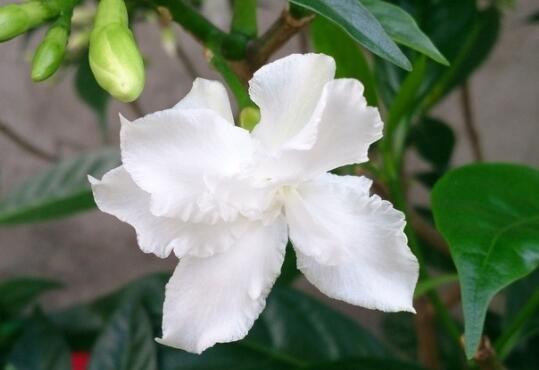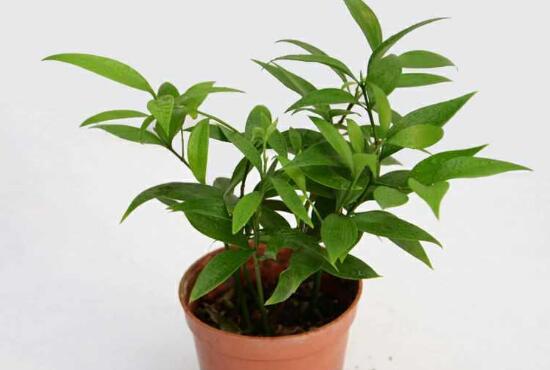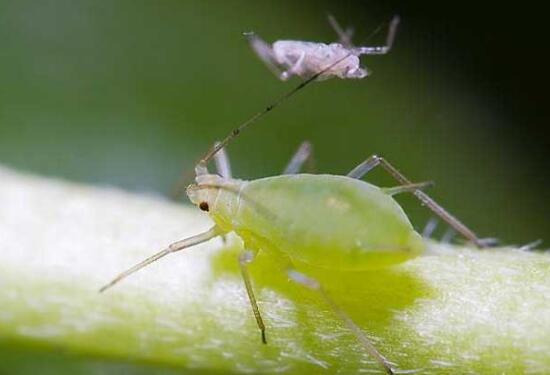What to do when bugs grow in the dog tooth flower? pest control of the dog tooth flower / 2 insect pests 2 diseases
In the process of breeding dog tooth flower, the last thing we want to encounter is diseases and insect pests. This kind of problem is very harmful to the plant, which will not only affect its ornamental value, but also lead to the phenomenon of plant withering and death. So what should we do if the dog tooth flower grows worms? What do you need to do to prevent and control the diseases and insect pests of Bermuda? Next, the editor will take you to learn about it.
First, the dog tooth flower grows the worm how to do, find the reason

If you want to know what to do when the bugs grow, first of all, we have to understand what kind of insects are growing, so that we can deal with them pertinently, because the treatment methods of each kind of diseases and insect pests are different, and the details are described in detail below. Friends who are troubled in this respect can learn about it.
Second, the prevention and control of diseases and insect pests (pests)
Thrips
Thrips are the general name of Thysanoptera of Insecta. They are relatively small in size, generally between 0.5-2mm in length, and rarely larger than 7mm in volume. This pest mainly harms the leaves of the bulbs, which will gradually absorb the nutrients, resulting in the gradual loss of green leaves and yellowing and drying up.
Control method: when we deal with the disease and insect pest of this kind of dog tooth flower, we can use 3000 times of imidacloprid and 60 000 times of Amelol for rotational spray control.
Aphids
Aphids are one of the most destructive pests on the earth, which are harmful to many plants, and Bermuda is one of them. The main damage of this pest is that adults and nymphs feed on leaves, stems, tender heads and tender panicle sap, resulting in a large loss of plant nutrients and wilting.
Control method: when we deal with this dog tooth flower pest, we can spray it with 1000 times of omethoate emulsion or 1000-1500 times of Mala sulfur emulsion.
3. Pest control of Bermuda flower (disease)
Anthrax
Anthracnose disease mainly occurs on the leaves of Bermudagrass. At the initial stage of the disease, many watery yellow spots appear on the leaves, and after expansion, there are oval to irregular brown or yellowish brown spots. In the later stage, the disease spots will cause the leaves to dry up and produce small black spots arranged in wheel patterns.
Prevention and control methods: the emergence of this disease is mainly due to poor ventilation in the maintenance environment, so we must maintain environmental ventilation when breeding. As for the treatment of this disease, we can use 65% Dyson zinc wettable powder 600 times to spray the disease, usually once a week, 3-4 times can be cured.
Black spot disease
Black spot is a disease caused by fungi, which mainly harms the leaves, petioles and shoots of Bermudagrass. Many purple-brown spots will appear in the affected parts, and with the passage of time, the spots will gradually expand, and the color will gradually change. Finally, the plant gradually withered.
Prevention and control methods: for this kind of diseases and insect pests, we can use methyl topiramate or carbendazim to spray the diseased plants, usually once every 7-10 days, 2-3 times can be cured.
How to control the temperature / apply thin fertilizer / replenish water / light when the leaves turn yellow?
Bermudagrass is a kind of flower plant with high ornamental value, which can be seen in all provinces and regions in southern China, but even if the ornamental plant is highly ornamental, its overall beauty will be affected if its leaves turn yellow. what about the yellowing leaves? Next, the editor will take you to learn about it.
First, what if the leaves of Bermuda turn yellow? find the reason.
If you want to know what to do with the yellowing of the leaves, we first need to know the cause of this phenomenon, and then we will be able to solve the problem, such as lack of light and improper watering. As for how to solve the problem, there is a detailed description below. Let's take a look.
Second, the causes of the yellowing of the leaves of Bermuda (with solutions)
1. The temperature is too low
In the process of growth, the requirement of environmental temperature is very high, and this kind of plant is not cold-resistant. If we do not control the temperature well in the process of breeding, resulting in the environmental temperature is too low, it is very easy to cause the leaves of Bermuda to turn yellow, and if the temperature is too low, it is also easy to frostbite or even freeze to death.
Solution: in the process of its growth, it is very important to let it grow in a comfortable ambient temperature. Its suitable temperature is above 10 ℃. If it is lower than this temperature, its leaves will turn yellow, and if it is lower than 0 ℃, the branches will be frostbitten, so we must control the temperature when we breed it.
two。 Improper fertilization
Fertilizer is one of the main nutrients in the growth process of Bermuda. If we apply too little fertilizer or the concentration of fertilizer is too high, it will cause the leaves to turn yellow. If it is fertilized too little, it will turn yellow due to lack of nutrients, and if the fertilizer concentration is too high, it will burn the plant and cause yellowing.
Solution: the demand for fertilizer in the growth process is very high, especially after entering the growth period, its demand for water is very high, basically every 7-10 days need to be fertilized, so that its leaves can grow big. However, the concentration of fertilizer should not be too high when fertilizing, and must be diluted with water before application. If the concentration is too high, it is easy to burn the plant.
3. Water deficiency
In the process of breeding Bermuda, especially after it enters the growing period, the demand for water is very high, especially in summer, its leaves will wilt and wither if it is not watered for a day, and the plant will wither and die if it is short of water for a long time.
Solution: dog tooth flower this plant likes to grow in a warm and humid environment, so in the process of daily maintenance, we should keep the soil moist, do not wait until the basin soil is completely dry before watering, in summer, the weather is relatively hot, we basically have to water every day, and often spray water around to increase air humidity.
4. Lack of light
Bermudagrass is a kind of light-loving plant, if the light is not enough, its leaves will gradually dim and fade green, thus gradually appear the phenomenon of leaf yellowing, so light is very important for it.
Solution: if the leaves are yellowing due to lack of light, we'd better not immediately move it to outdoor exposure, but put it in a place of sunlight scattering for maintenance, and let it receive enough light after it recovers.
5. Diseases and insect pests infestation
In the process of breeding Bermuda, if we raise it improperly, it is easy to have problems such as diseases and insect pests, which do great harm to the plant, which will not only cause the leaves to turn yellow, but also cause the plant to wither and die in serious cases.
Solution: if there are diseases and insect pests and other problems, we must deal with them in time. The specific treatment methods have been introduced in detail in the article on the prevention and control of diseases and insect pests, so I will not repeat them here.
How to raise the dog tooth flower, the breeding method and precautions / temperature should not be too low.
Gouya flower is a flower plant of Apocynaceae, which has high ornamental value. It can be seen in many areas of our country, but it is not easy to raise it well, and there are many places that need to be paid attention to. About how to raise the dog tooth flower? What are the breeding methods and matters needing attention of dog tooth flower? Next, the editor will take you to learn about it.
First, how to raise dog tooth flowers, pay attention to temperature control
If you want to know how to raise the dog tooth flower, first of all, we have to understand its growth habits. This kind of plant likes the warm and humid environment and is less resistant to cold, so we should not let the temperature be too low when we breed it. If you grow at a low temperature of 5-6 ℃ for a long time, the plant is very prone to frostbite, so you should pay attention to this.
2. Breeding methods and matters needing attention of Bermuda flower
1. Humus soil
Before we breed the dog tooth flower, we should first choose the soil, this is a good step to lay a good foundation, is very important, generally it is best to choose to transport fertile and slightly acidic humus soil, this kind of soil is rich in nutrients, and the drainage and air permeability are better, so that the plant can grow better.
two。 Fertilization, once every 7-10 days
Fertilizer is one of the main nutrients in the growth process, especially after entering its growing period, its demand for fertilizer is very high. Basically, we need to apply fertilizer every 7-10 days, so that the plant can have enough nutrients to thrive. In fertilizer, we can choose thin compound fertilizer and manure water.
3. Temperature, above 10 ℃
In the maintenance of the dog tooth flower, it is also necessary to control the ambient temperature. The suitable temperature for its growth is above 10 ℃. If the temperature is lower than this, the leaves of the dog tooth flower will turn yellow, and if it is lower than 0 ℃, the branches will be frostbitten, so we must do a good job in temperature control when breeding it.
4. Moisture, keep the soil moist
This kind of plant likes to grow in a warm and humid environment, so in the process of daily maintenance, we should keep the soil moist and do not wait until the basin soil is completely dry before watering. In summer, the weather is relatively hot. We basically have to water every day, and often spray water around to increase air humidity.
5. Sunshine, sunshine should be sufficient.
This kind of plant likes light, so when we breed it, we should keep it in sufficient light. Only in this way can it grow better. If the growth environment is too cool, it will cause the leaves of the plant to turn yellow and even fall off. So we should pay special attention to this point.
6. Timely prevention and control of diseases and insect pests
In the process of breeding Gouya flower, if we are not careful enough, it is easy to let diseases and insect pests enter while we are not careful. this kind of problem is very harmful to the plant, so we must prevent and cure it in time when we find it. For specific methods, you can refer to the article on pest control of Gouya flower, which is introduced in detail.
- Prev

What to do with the growing insects of bamboo and cypress, the control of common diseases and insect pests / 3 insect pests and 3 diseases
For bamboo and cypress, flower friends should be no stranger, it is neither bamboo nor cypress, it is a beautiful foliage plant, raised by many people at home. However, in indoor breeding, due to improper maintenance, high air humidity, poor ventilation and other reasons, bamboo and cypress are easy to get sick, affecting the growth of plants. So, what about the bamboo and cypress worms?
- Next

What about African pansy aphids? control of common diseases and insect pests of African pansy / spraying of 3 insects and 4 diseases
In the indoor breeding of Corydalis, we need to master some maintenance skills and pest control. I won't say much about the skills of raising African pansy here. I believe everyone has mastered it. Next, let's talk about diseases and insect pests. African pansy is the most likely to produce aphids. What about African pansy aphids?
Related
- Fuxing push coffee new agricultural production and marketing class: lack of small-scale processing plants
- Jujube rice field leisure farm deep ploughing Yilan for five years to create a space for organic food and play
- Nongyu Farm-A trial of organic papaya for brave women with advanced technology
- Four points for attention in the prevention and control of diseases and insect pests of edible fungi
- How to add nutrient solution to Edible Fungi
- Is there any good way to control edible fungus mites?
- Open Inoculation Technology of Edible Fungi
- Is there any clever way to use fertilizer for edible fungus in winter?
- What agents are used to kill the pathogens of edible fungi in the mushroom shed?
- Rapid drying of Edible Fungi

